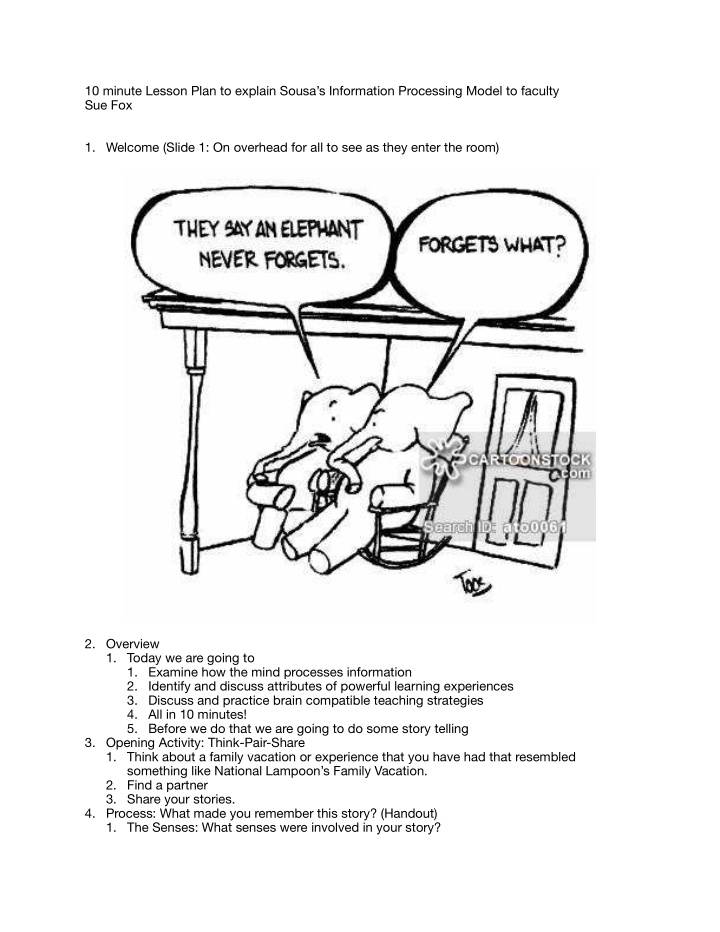



10 minute Lesson Plan to explain Sousa’s Information Processing Model to faculty Sue Fox 1. Welcome (Slide 1: On overhead for all to see as they enter the room) 2. Overview 1. Today we are going to 1. Examine how the mind processes information 2. Identify and discuss attributes of powerful learning experiences 3. Discuss and practice brain compatible teaching strategies 4. All in 10 minutes! 5. Before we do that we are going to do some story telling 3. Opening Activity: Think-Pair-Share 1. Think about a family vacation or experience that you have had that resembled something like National Lampoon’s Family Vacation. 2. Find a partner 3. Share your stories. 4. Process: What made you remember this story? (Handout) 1. The Senses: What senses were involved in your story?
1. The senses are our input-the start of the memory process 2. Our senses only hold information for a short time 3. Why do you still remember this story?
2. Your Emotions: What emotions did you have at the time of the event? (Graphic Organizer Handout) 1. Emotions are you initial processing-They answer 2 questions: 1. Does this make sense? 2. Does this have meaning? 3. If yes, the information gets passed on to your short-term memory
2. Short-term memory (Slide 2: on overhead) 1. The slide says it all-short-term memory is short! 2. How does long-term memory happen? 1. Think-pair-share 2. Short discussion
3. Long-term memory deals with the information that you are trying to retain. (Slide 3: on overhead) 1. Practice-doing something (retelling your story, building something, etc.) 2. So now, take your graphic organizer, and with a partner write down what you remember/know about transferring learning from a sensory experience to a long-term memory. 3. Teacher shout-out: could be things like “hook”, “emotion grab”, “use multiple senses”, “retelling”, “future information need”, etc. 4. Gallery Walk: All pairs identify one brain-based teaching practice they use that they would like to share. Each pair gets a “sticky” poster to record their idea and puts it on the wall. Teachers walk-and-talk around the room to read, take pictures (of ideas they would like to try) of the posters. 5. Review and thank you.
Recommend
More recommend